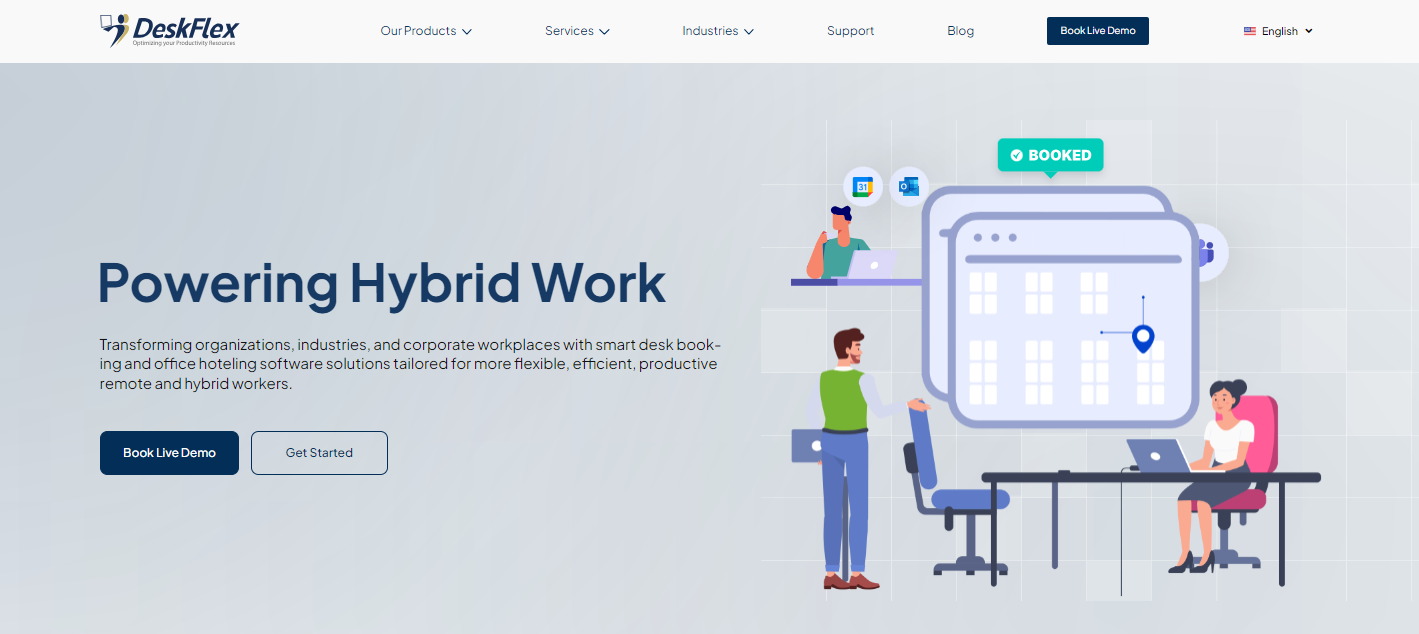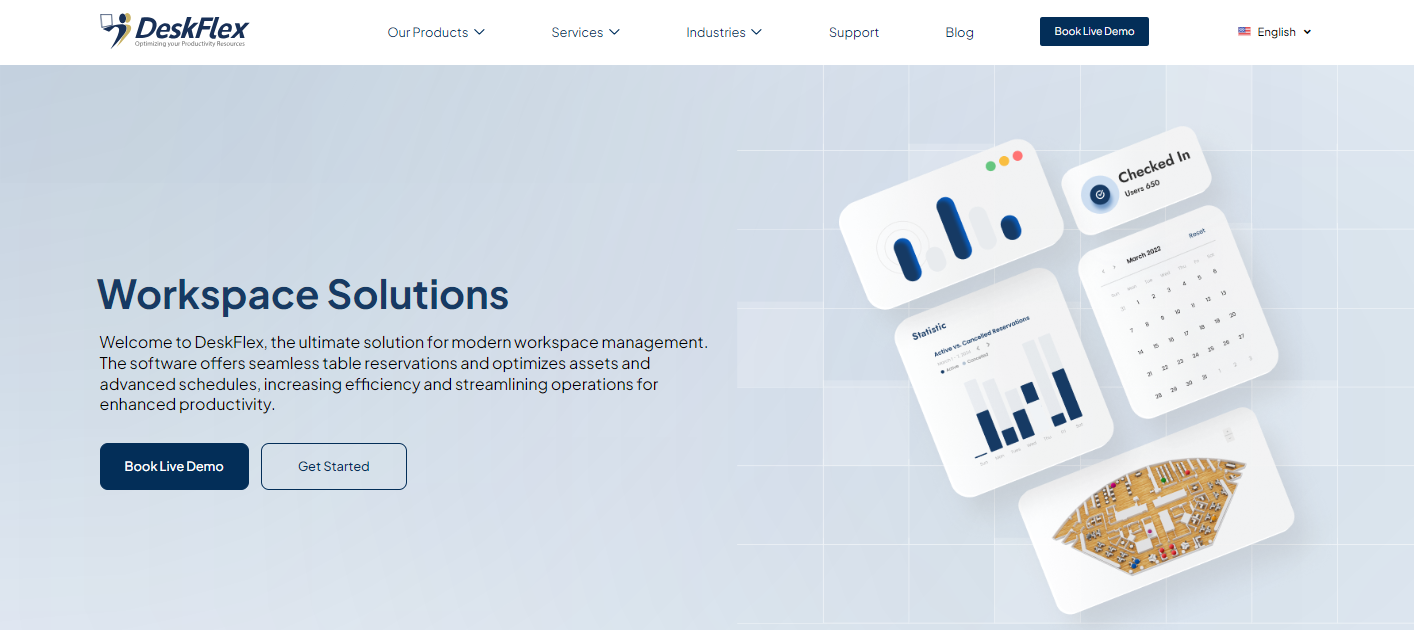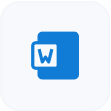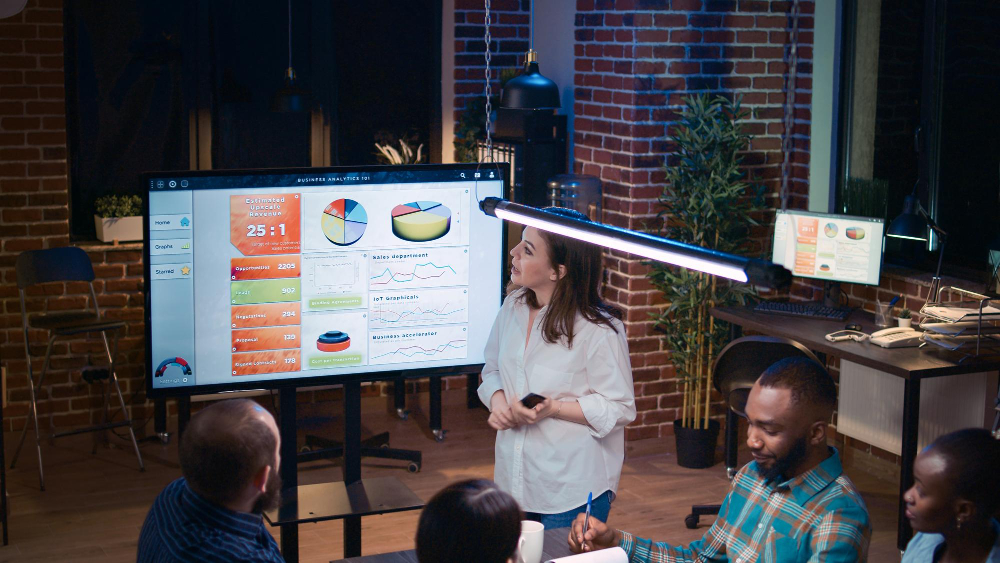
Hot Desking Meaning: What It Is and How It Works
As businesses move toward more flexible and adaptive work environments, hot desking has become a popular solution for optimizing office space.
Hot desking allows employees to use available desks on a first-come, first-served basis, eliminating the need for assigned seating and offering greater flexibility in how office spaces are used.
This system is particularly useful in hybrid workplace models, where employees may split their time between working remotely and coming into the office.
In this article, we’ll explore the meaning of hot desking, how it works, and its advantages for both businesses and employees.
What Does Hot Desking Mean?
Hot desking is a flexible office setup where employees are not assigned permanent desks. Instead, they can choose any available desk each day based on their needs.
This approach is a departure from the traditional model, where employees have a designated workstation that remains theirs even when they are out of the office.
In a hot desk model, the goal is to reduce the number of unused desks and make better use of the available space.
Employees might come into the office and use a different desk each time based on availability, daily tasks, or preferred work environment.
The system operates on an ad hoc basis, meaning desks are booked or selected as needed rather than permanently assigned.
Benefits of Hot Desking for Businesses and Employees

A hot desk offers several significant benefits for companies and employees. Let’s have a look at the main benefits:
Cost Savings
By reducing the number of permanently assigned desks, businesses can cut down on real estate costs. With fewer desks, companies may require less overall office space, leading to substantial cost savings over time.
This is particularly beneficial for businesses adopting hybrid workplace models, where not all employees are in the office at the same time.
Hot desking allows businesses to operate more cost-effectively, avoiding the overhead of unused desks or wasted space.
Maximized Space Usage
Instead of empty desks taking up valuable office space when employees are out of the office, hot desking ensures that desks are only occupied when needed.
This system minimizes wasted space and optimizes the overall office layout.
Integrating desk booking software provides real-time data on desk usage, enabling companies to make informed decisions about allocating resources and adjusting the floor plan based on actual space utilization.
Flexibility for Employees
One of the primary benefits of hot desking is the flexibility it offers employees. Workers have the freedom to choose a desk that suits their daily tasks.
Hot desking supports different work styles, whether they prefer a quiet zone for focused work or a collaborative space for group projects.
This flexibility is especially useful for employees who work in shifts, as it allows multiple employees to share the same workspace at different times.
To maintain a balance between flexibility and structure, a well-implemented hot desking system should include clear guidelines for desk bookings and usage.
Encouraging Collaboration
Hot desking fosters a more collaborative environment by allowing employees to sit in different areas and interact with colleagues from other teams or departments.
This setup encourages spontaneous interactions, idea-sharing, and cross-team collaboration.
Employees who would otherwise be isolated in assigned seating can now meet new people, gain fresh perspectives, and build stronger working relationships.
However, it’s also important to ensure that employees can book hot desks in quiet zones or private areas where they can focus on more intensive tasks.
Improved Employee Productivity
Employees are more likely to be productive with the ability to choose workspaces that match their tasks.
Hot desking allows employees to select the right environment for their needs, whether it’s a quiet zone for concentration or a meeting room for brainstorming sessions.
Adapting to Hybrid Work Models
Hot desking is the ideal solution for businesses adopting hybrid work models, where employees split their time between remote and in-office work.
It provides the flexibility needed to accommodate employees working different shifts or those who come to the office only part-time.
This also helps companies manage office capacity more efficiently, ensuring that office space is used optimally regardless of employee schedules.
Companies that have implemented hot desking have reduced the number of having a personal desk and a private office and repurposed unused space for collaborative areas and quiet zones.
Attracting and Retaining Top Talent
Offering flexible work environments has become important in attracting and retaining top talent.
Employees increasingly seek workplaces that offer flexibility, autonomy, and a collaborative space that fosters creativity and innovation.
By implementing hot desking, businesses can offer a modern work environment that appeals to today’s workforce.
This can be especially attractive to new employees who value flexibility over rigid assigned seating arrangements.
How Hot Desking Works in Modern Office Spaces
Hot desking typically involves using desk booking software to help manage available spaces and allow employees to reserve desks in advance.
In larger offices, this may include features like interactive floor plans and real-time updates on desk availability. Employees can check in through an app or system and secure their workstations for the day.
Employees arrive at the office and use desk booking software to select an available desk.
The desk booking system provides real-time information on open desks, allowing employees to decide where to work.
Workers check their reserved desks, ensuring that space is used efficiently and avoiding empty desks.
Employees check out at the end of the day or when they no longer need the desk, making the space available for others.
How to Implement Hot Desks in Your Office

For businesses considering hot desking, careful planning is essential to ensure a smooth transition.
Successful implementation requires a thoughtful approach that balances hot-desking’s flexibility with the needs of employees and the overall business.
Below is a step-by-step guide to effectively introducing hot desking work into your office:
1. Evaluate Office Layout
The first step in implementing hot desking is to assess your current office layout. Determine where hot desks would be most effective, ensuring that the space accommodates collaborative work and individual tasks.
Businesses should create a blend of environments, including collaborative spaces for teamwork, quiet zones for focused work, and private offices for confidential tasks or meetings.
This evaluation may also involve reconfiguring the floor plan to maximize the use of available space and reduce wasted space from empty desks.
2. Choose Desk Booking Software
One key tool for managing hotdesking efficiently is a robust desk booking system. This software allows employees to reserve hot desks, conference rooms, and other office resources in real time.
To avoid confusion, it should offer features such as interactive maps of the office showing available desks and an easy check-in process.
3. Create Office Policies
Clear and well-communicated office policies are essential for successfully adopting a hot desking model.
These policies should outline how hot desking works, the rules for booking desks, and guidelines for checking in and out.
Additionally, office policies should cover practical considerations such as the storage of personal items since employees will not have permanently assigned desks.
Booking limits: Set timeframes for how far in advance desks can be reserved.
Check-in process: Define how employees check into their desks to confirm usage.
Shared space etiquette: Establish behavior expectations, such as tidying the workspace after use.
Locker availability: Provide lockers or storage areas where employees can keep their belongings.
4. Get Employee Feedback
When transitioning to shared office spaces and hot desks, involving employees by gathering their feedback is important.
The new system will directly affect employees, so understanding their experiences and addressing concerns is essential to making adjustments that will enhance the success of hot desking.
Feedback sessions can help identify pain points such as:
Difficulty finding available desks at certain times.
There is a need for additional quiet zones or collaborative spaces.
Concerns about the loss of assigned seating or personal space.
How DeskFlex Optimizes Hot Desking in a Hybrid Office Space Environment

DeskFlex is an essential tool for modern businesses transitioning to hybrid work models. By enabling flexibility and efficiency, DeskFlex helps companies manage their office space more effectively while supporting the varying needs of remote and in-office employees.
It also allows businesses to avoid the inefficiencies that come with same desk assignments by offering a dynamic system where desks can be reserved based on daily needs.
Here’s how DeskFlex optimizes a hybrid workspace environment:
Real-Time Desk and Room Booking
DeskFlex allows employees to book available hot desks, meeting rooms, a conference room, and other bookable meeting rooms and office resources in real time.
This feature prevents overbooking or confusion about desk availability, ensuring that employees can quickly secure the space they need for the day.
Flexible Seating and Space Utilization
For companies adopting hybrid work models, DeskFlex ensures that office space is used efficiently. Employees only book desks on the days they are in the office, allowing businesses to reduce the number of permanent desks and avoid wasted space.
Interactive Office Layouts
DeskFlex offers visual tools like interactive office maps. These maps show which desks, meeting rooms, or private spaces are available, helping employees navigate the office more easily.
This feature also allows businesses to adjust their office layout as needed, whether to accommodate larger teams, hybrid workers, or evolving business needs.
Data-Driven Space Management
DeskFlex provides valuable insights into office space usage through data analytics. Managers can analyze real-time data to track desk usage, monitor demand for certain spaces, and identify underutilized areas.
This information helps businesses make informed decisions on how to optimize their office layout, ensuring that every square foot is used effectively.
Optimize Your Office with Hot Desking Using DeskFlex

DeskFlex is the ideal tool for businesses looking to implement hot desking efficiently. It helps manage flexible office spaces by offering a dynamic system where employees can reserve desks on demand.
With DeskFlex, employees can quickly check real-time desk availability, ensuring a smooth booking process that prevents overbooking or wasted office space.
DeskFlex integrates powerful features like visual floor maps, showing exactly which desks are available, and real-time occupancy data to track how desks and meeting rooms are being utilized.
DeskFlex’s desk booking software supports hot desking by enabling employees to book workspaces only when they are in the office.
This reduces unnecessary real estate costs by ensuring desks are only occupied when needed, leading to more cost-effective and efficient space management.
Book a demo with DeskFlex today and see how it can transform your office with flexible hot desking solutions!
FAQs About Hot Desking
What is the concept of hot desking?
A hot desk is a flexible office system where employees are not assigned specific desks. Instead, they use available hot desks on a first-come, first-served basis.
This approach maximizes space utilization by ensuring desks are only used when needed, making it an ideal solution for businesses with hybrid or remote work models.
Why do they call it a hot desk?
The term “hot desk” comes from the concept of “hot racking,” used in naval and military settings, where multiple workers share the same bunk in rotating shifts.
In an office context, “hot desks” are shared workstations that employees can use as needed, without permanent desk assignments.
What is another name for hot desking?
Hot desking is also referred to as “desk sharing” or “flexible seating.” These terms highlight the flexible and shared nature of workspace arrangements, where employees can choose their desk for the day based on availability.
Is hot desking a good idea?
Hot desking can be a great idea for businesses looking to reduce real estate costs and support flexible work environments.
It encourages collaboration, maximizes space usage, and accommodates hybrid or remote work models.



















































 Support
Support  Demo
Demo  Blog
Blog 


